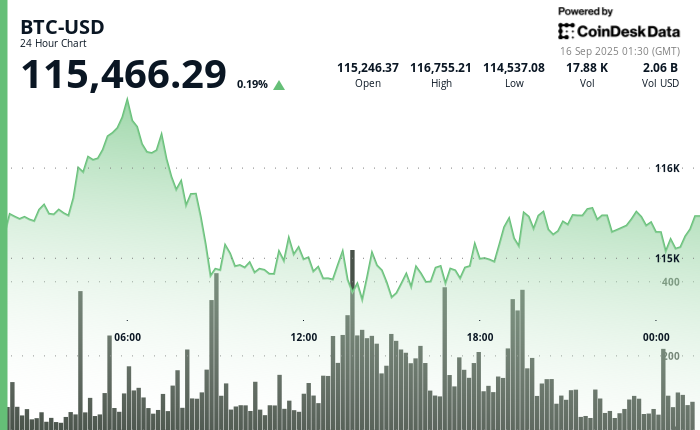Uncategorized
Why 24/7 Digital Markets Will Power Development in Frontier Economies

Goodbye to vague notions of “soft power” and “impact investing.”
Hello to benchmarking, concrete KPIs, and sovereign capital deployed with precision.
In the 20th century, Bretton Woods and the Marshall Plan set the financial blueprint for postwar recovery. While the stakes today are just as high, the tools are different. From Ukraine to sub-Saharan Africa, frontier markets are fighting for financial credibility in a trust-scarce world. Traditional aid models, plagued by opacity and inefficiency, have been further dismantled by the Trump Administration’s DOGE initiative, which is moving to replace aid with measurable, tech-enabled delivery systems.
Tokenization is the inevitable endgame.
BlackRock Offers a Path Forward
BlackRock’s iShares Bitcoin Trust (IBIT), with over $14 billion in inflows and nearly $200 million in annual fee revenue, has become not only a standout among new ETFs but a symbol of shifting institutional risk tolerance. Its meteoric rise demonstrates growing acceptance of digital assets as a standalone investment class, particularly among institutional investors once wary of volatility. As mainstream allocators embrace digital assets through regulated vehicles like IBIT, capital markets are beginning to reflect a broader appetite for asymmetric upside—an investment profile long associated with frontier economies.
Frontier markets, characterized by political uncertainty, thin liquidity, and underdeveloped financial infrastructure, have historically struggled to attract stable foreign direct investment. But the institutional normalization of bitcoin and other decentralized assets is paving new pathways for capital to reach these regions.
Just as ETFs like IBIT have created a regulated bridge into crypto, new financial structures—tokenized infrastructure, auditable capital flows, and blockchain-based land registries—are likely to do the same for frontier development. The same investors pouring billions into Bitcoin ETFs may soon view frontier economies not as exotic risk, but as parallel vehicles for exponential returns, particularly when paired with digital rails designed with transparency and scalability in mind.
A Data Entry Revolution for Global Aid
At the root of every successful logistics or capital deployment strategy lies a surprisingly mundane concept: data entry. Every bottle of clean water, every corrugated roof panel, every bolt of fabric destined for refugee housing must be recorded, reconciled, and reported.
Today, this is done manually across dozens of silos: UN spreadsheets, NGO CRMs, local government PDFs. But tokenizing these entries—embedding them in smart contracts, linking them to geolocation, timestamp, and vendor profiles—creates a live ledger of aid in motion.
This new approach towards accountability will enable not just transparent procurement but tokenized local liquidity: local entrepreneurs paid in stablecoin, verified vendors rewarded with smart grants, or veteran-owned Ukrainian firms given tradable carbon or aid credits. Tokenization allows physical goods, services, and contractual obligations to be represented as digital assets on immutable ledgers. In practice, this means a water pump in Sumy or a shipment of medical supplies in Sudan can be tracked, verified, and paid for in real time without bureaucratic drag or trust deficits.
A properly structured token ecosystem creates global, auditable, and real-time liquidity for critical development resources: a 24/7 commodity market for gravel, steel, solar panels, or cement in post-conflict zones.
24/7 Markets: A Strategic Imperative for the U.S.?
Global commodity markets are not built for the rhythms of frontier states. Most development needs—timber, power tools, clean water filtration—are transacted through arcane, manually priced channels. This invites corruption, delays, and cost overruns.
Tokenized markets enable round-the-clock pricing, liquidity, and settlement. A contractor rebuilding schools in South Sudan can lock in tomorrow’s price for sheet metal with a click. A regional bank in Tbilisi can see in real-time whether a food distribution contract has been fulfilled. Governments can collateralize transparent delivery records instead of hoping donors believe their paperwork.
As China floods the Global South with opaque lending and Russia bankrolls destabilization, the U.S. needs a private-sector-led, transparency-first development model. Tokenized systems provide built-in auditability, modular integration, and sovereign-aligned incentives. And they align with the State Department’s mandate toward outcomes-based aid, rather than a carte blanche check which too long defined U.S. foreign policy.
Through our work at AUSP, we’ve seen firsthand that frontier markets are starving for trust, coordination, and clarity. Tokenization is not the starting point in these spaces, nor should it be, but it will be the final endpoint. In the interim, best practices for data entry to ensure that life-saving resources go towards their intended use is the priority; these logs will contain valuable data sets for reconstruction while laying the foundation for 24/7 frontier markets.
What Bretton Woods did with pen and paper, tokenization will do with code: create a new financial order for U.S.-led reconstruction.
Uncategorized
Asia Morning Briefing: Fragility or Back on Track? BTC Holds the Line at $115K

Good Morning, Asia. Here’s what’s making news in the markets:
Welcome to Asia Morning Briefing, a daily summary of top stories during U.S. hours and an overview of market moves and analysis. For a detailed overview of U.S. markets, see CoinDesk’s Crypto Daybook Americas.
Bitcoin (BTC) traded just above $115k in Asia Tuesday morning, slipping slightly after a strong start to the week.
The modest pullback followed a run of inflows into U.S. spot ETFs and lingering optimism that the Federal Reserve will cut rates next week. The moves left traders divided: is this recovery built on fragile foundations, or is crypto firmly back on track after last week’s CPI-driven jitters?
That debate is playing out across research desks. Glassnode’s weekly pulse emphasizes fragility. While ETF inflows surged nearly 200% last week and futures open interest jumped, the underlying spot market looks weak.
Buying conviction remains shallow, Glassnode writes, funding rates have softened, and profit-taking is on the rise with more than 92% of supply in profit.
Options traders have also scaled back downside hedges, pushing volatility spreads lower, which Glassnode warns leaves the market exposed if risk returns. The core message: ETFs and futures are supporting the rally, but without stronger spot flows, BTC remains vulnerable.
QCP takes the other side.
The Singapore-based desk says crypto is “back on track” after CPI confirmed tariff-led inflation without major surprises. They highlight five consecutive days of sizeable BTC ETF inflows, ETH’s biggest inflow in two weeks, and strength in XRP and SOL even after ETF delays.
Traders, they argue, are interpreting regulatory postponements as inevitability rather than rejection. With the Altcoin Season Index at a 90-day high, QCP sees BTC consolidation above $115k as the launchpad for rotation into higher-beta assets.
The divide underscores how Bitcoin’s current range near $115k–$116k is a battleground. Glassnode calls it fragile optimism; QCP calls it momentum. Which side is right may depend on whether ETF inflows keep offsetting profit-taking in the weeks ahead.

Market Movement
BTC: Bitcoin is consolidating near the $115,000 level as traders square positions ahead of expected U.S. Fed policy moves; institutional demand via spot Bitcoin ETFs is supporting upside
ETH: ETH is trading near $4500 in a key resistance band; gains are being helped by renewed institutional demand, tightening supply (exchange outflows), and positive technical setups.
Gold: Gold continues to hold near record highs, underpinned by expectations of Fed interest rate cuts, inflation risk, and investor demand for safe havens; gains tempered somewhat by profit‑taking and a firmer U.S. dollar
Nikkei 225: Japan’s Nikkei 225 topped 45,000 for the first time Monday, leading Asia-Pacific gains as upbeat U.S.-China trade talks and a TikTok divestment framework lifted sentiment.
S&P 500: The S&P 500 rose 0.5% to close above 6,600 for the first time on Monday as upbeat U.S.-China trade talks and anticipation of a Fed meeting lifted stocks.
Elsewhere in Crypto
Uncategorized
Wall Street Bank Citigroup Sees Ether Falling to $4,300 by Year-End

Wall Street giant Citigroup (C) has launched new ether (ETH) forecasts, calling for $4,300 by year-end, which would be a decline from the current $4,515.
That’s the base case though. The bank’s full assessment is wide enough to drive an army regiment through, with the bull case being $6,400 and the bear case $2,200.
The bank analysts said network activity remains the key driver of ether’s value, but much of the recent growth has been on layer-2s, where value “pass-through” to Ethereum’s base layer is unclear.
Citi assumes just 30% of layer-2 activity contributes to ether’s valuation, putting current prices above its activity-based model, likely due to strong inflows and excitement around tokenization and stablecoins.
A layer 1 network is the base layer, or the underlying infrastructure of a blockchain. Layer 2 refers to a set of off-chain systems or separate blockchains built on top of layer 1s.
Exchange-traded fund (ETF) flows, though smaller than bitcoin’s (BTC), have a bigger price impact per dollar, but Citi expects them to remain limited given ether’s smaller market cap and lower visibility with new investors.
Macro factors are seen adding only modest support. With equities already near the bank’s S&P 500 6,600 target, the analysts do not expect major upside from risk assets.
Read more: Ether Bigger Beneficiary of Digital Asset Treasuries Than Bitcoin or Solana: StanChart
Uncategorized
XLM Sees Heavy Volatility as Institutional Selling Weighs on Price

Stellar’s XLM token endured sharp swings over the past 24 hours, tumbling 3% as institutional selling pressure dominated order books. The asset declined from $0.39 to $0.38 between September 14 at 15:00 and September 15 at 14:00, with trading volumes peaking at 101.32 million—nearly triple its 24-hour average. The heaviest liquidation struck during the morning hours of September 15, when XLM collapsed from $0.395 to $0.376 within two hours, establishing $0.395 as firm resistance while tentative support formed near $0.375.
Despite the broader downtrend, intraday action highlighted moments of resilience. From 13:15 to 14:14 on September 15, XLM staged a brief recovery, jumping from $0.378 to a session high of $0.383 before closing the hour at $0.380. Trading volume surged above 10 million units during this window, with 3.45 million changing hands in a single minute as bulls attempted to push past resistance. While sellers capped momentum, the consolidation zone around $0.380–$0.381 now represents a potential support base.
Market dynamics suggest distribution patterns consistent with institutional profit-taking. The persistent supply overhead has reinforced resistance at $0.395, where repeated rally attempts have failed, while the emergence of support near $0.375 reflects opportunistic buying during liquidation waves. For traders, the $0.375–$0.395 band has become the key battleground that will define near-term direction.

Technical Indicators
- XLM retreated 3% from $0.39 to $0.38 during the previous 24-hours from 14 September 15:00 to 15 September 14:00.
- Trading volume peaked at 101.32 million during the 08:00 hour, nearly triple the 24-hour average of 24.47 million.
- Strong resistance established around $0.395 level during morning selloff.
- Key support emerged near $0.375 where buying interest materialized.
- Price range of $0.019 representing 5% volatility between peak and trough.
- Recovery attempts reached $0.383 by 13:00 before encountering selling pressure.
- Consolidation pattern formed around $0.380-$0.381 zone suggesting new support level.
Disclaimer: Parts of this article were generated with the assistance from AI tools and reviewed by our editorial team to ensure accuracy and adherence to our standards. For more information, see CoinDesk’s full AI Policy.
-

 Business11 месяцев ago
Business11 месяцев ago3 Ways to make your business presentation more relatable
-

 Fashion11 месяцев ago
Fashion11 месяцев agoAccording to Dior Couture, this taboo fashion accessory is back
-

 Entertainment11 месяцев ago
Entertainment11 месяцев ago10 Artists who retired from music and made a comeback
-

 Entertainment11 месяцев ago
Entertainment11 месяцев ago\’Better Call Saul\’ has been renewed for a fourth season
-

 Entertainment11 месяцев ago
Entertainment11 месяцев agoNew Season 8 Walking Dead trailer flashes forward in time
-

 Business11 месяцев ago
Business11 месяцев ago15 Habits that could be hurting your business relationships
-

 Entertainment11 месяцев ago
Entertainment11 месяцев agoMeet Superman\’s grandfather in new trailer for Krypton
-

 Entertainment11 месяцев ago
Entertainment11 месяцев agoDisney\’s live-action Aladdin finally finds its stars





